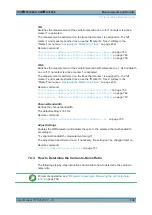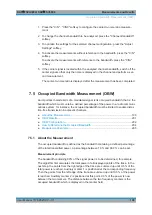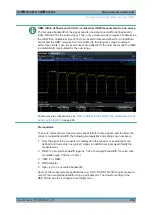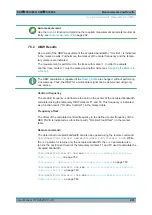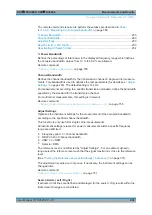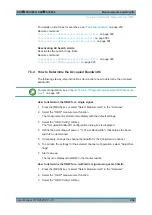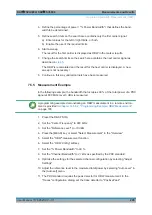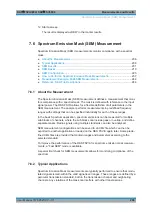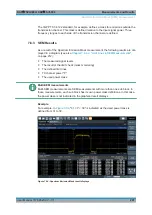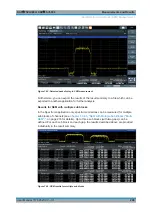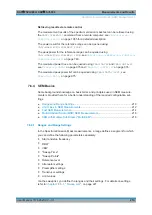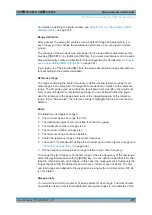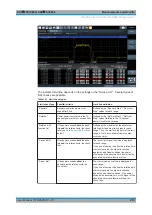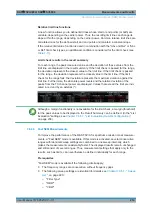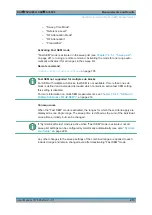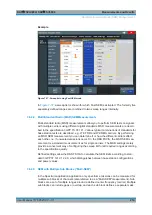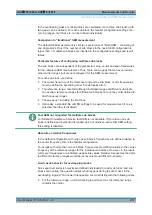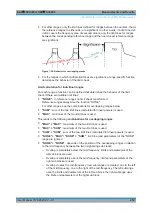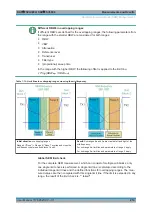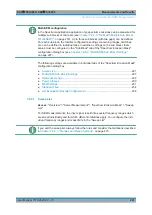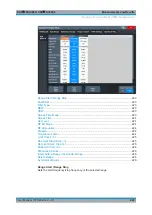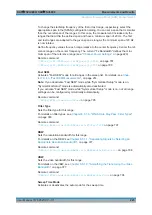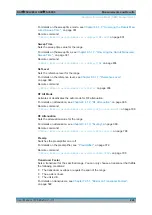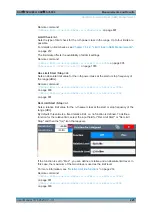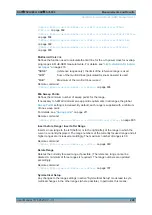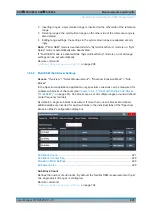
Measurements and Results
R&S
®
FSVA3000/ R&S
®
FSV3000
212
User Manual 1178.8520.02 ─ 01
minimum values. If the total number of sweep points is not enough to satisfy the mini-
mum sweep point requirements in all ranges, the R&S
FSV/A adjusts the global num-
ber of
accordingly. By default, each range has a minimum of one sweep
point.
This allows you to increase the resolution within a specific range for detailed analysis.
You do not have to increase the overall number of sweep points and thus the measure-
ment time for the SEM measurement.
Symmetrical ranges
You can easily define a sweep list with symmetrical range settings, i.e. the ranges to
the left and right of the reference range are defined symmetrically. When symmetrical
setup is activated, the current sweep list configuration is changed to define a symmetri-
cal setup regarding the reference range. The number of ranges to the left of the refer-
ence range is reflected to the right, i.e. any missing ranges on the right are inserted,
while superfluous ranges are removed. The values in the ranges to the right of the ref-
erence range are adapted symmetrically to those in the left ranges.
Symmetrical ranges fulfill the conditions required for "Fast SEM" mode (see
ter 7.6.4.3, "Fast SEM Measurements"
Power classes
If the signal power level to be monitored varies and the limits vary accordingly, you can
define power classes, which can then be assigned to the frequency ranges. Thus, the
limits for the signal levels can be defined differently for varying input levels. For
instance, for higher input levels a transmission standard can allow for higher power lev-
els in adjacent channels, whereas for lower input levels the allowed deviation can be
stricter. Up to four different power classes can be defined.
7.6.4.2
Limit Lines in SEM Measurements
For the R&S
FSV/A, the spectrum emission mask is defined using limit lines. Limit lines
allow you to check the measured data (that is, the trace results) against specified limit
values. Generally, it is possible to define limit lines for any measurement in the Spec-
trum application application using the [Lines] function. For SEM measurements, how-
ever, special limit lines are available via the "Sweep List" , and it is strongly recommen-
ded that you use only these limit line definitions.
In the "Sweep List" , you can define a limit line for each power class that varies its level
according to the specified frequency ranges. Special limit lines are automatically
defined for each power class according to the current "Sweep List" settings every time
the settings change. These limit lines are labeled "_SEM_LINE_<xxx>_ABS<0...3>"
and "_SEM_LINE_<xxx>_REL<0...3>" , where <xxx> is an index to distinguish limit
lines between different channels.
The limit line defined for the currently used power class is indicated by a red line in the
display. The result of the limit check is indicated at the top of the diagram. Note that
only "Pass" or "Fail" is indicated; a "Margin" function as for general limit lines is not
available.
Spectrum Emission Mask (SEM) Measurement

